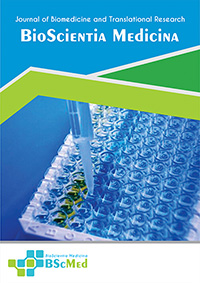Main Article Content
Abstract
Background: Condyloma acuminata (CA), caused by Human Papillomavirus (HPV), commonly affects the anogenital region, particularly in young, sexually active individuals. Perianal presentation is less common but significant, often linked to specific sexual practices. Bisexual men represent a unique demographic concerning STI risk factors and require careful assessment. This report details the diagnosis and management of perianal CA in a young bisexual male, emphasizing the diagnostic utility of clinical assessment, sexual history, and histopathology.
Case presentation: A 24-year-old Indonesian bisexual male presented with a three-month history of progressively enlarging, asymptomatic perianal nodules. He reported unprotected receptive anal intercourse with a male partner five months prior. Examination revealed multiple skin-colored, verrucous papules in the perianal region. HIV and syphilis screenings were negative. Histopathological examination of a biopsy specimen confirmed CA, showing parakeratosis, papillomatosis, acanthosis, and koilocytosis.
Conclusion: Treatment with 90% trichloroacetic acid (TCA) combined with cauterization resulted in significant clinical improvement at one-week follow-up. This case highlights the importance of obtaining a thorough, non-judgmental sexual history, recognizing characteristic lesion morphology, and utilizing histopathology for definitive diagnosis in managing perianal CA, particularly in populations with diverse sexual practices.
Keywords
Article Details
As our aim is to disseminate original research article, hence the publishing right is a necessary one. The publishing right is needed in order to reach the agreement between the author and publisher. As the journal is fully open access, the authors will sign an exclusive license agreement.
The authors have the right to:
- Share their article in the same ways permitted to third parties under the relevant user license.
- Retain copyright, patent, trademark and other intellectual property rights including research data.
- Proper attribution and credit for the published work.
For the open access article, the publisher is granted to the following right.
- The non-exclusive right to publish the article and grant right to others.
- For the published article, the publisher applied for the Creative Commons Attribution-NonCommercial-ShareAlike 4.0 International License.





